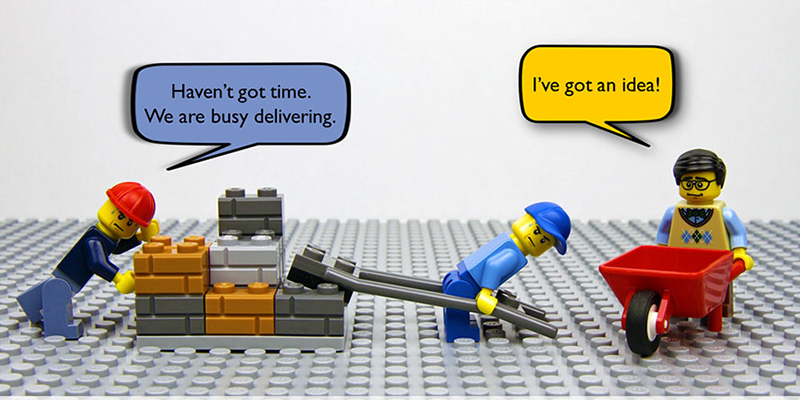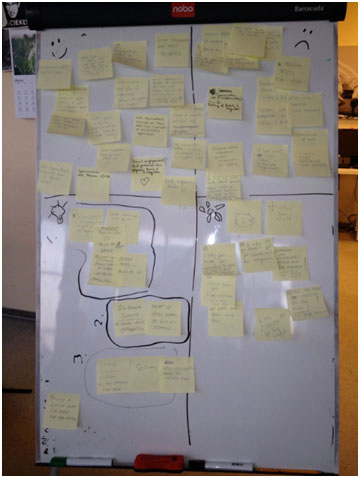The Pomodoro Technique: Tomatoes and Time Management
How can tomatoes help us with time management? Actually, it’s not the tomato per se, but the tomato-shaped kitchen timers that have become synonymous...

An Agile retrospective is a meeting that is held at any milestone point in a project for the purpose of continuous improvement. On Agile projects, retrospectives are held at the end of each iteration, allowing project teams to improve while a project is underway. That way, improvement doesn’t have to wait until a project is complete. That said, the retrospective format can also be an effective way of gathering “lessons learned” at the completion of a project.
A typical retrospective requires about an hour and involves everyone on a project team. People are asked to reflect on what happened in the iteration/project and answer the following questions:
When a retrospective is conducted in person, this often takes the form of adding post-it notes to a board. Virtual tools, such as Ideaboardz or Google JamBoard can be used for remote retrospectives.
There is often much to be learned by hearing from different team members. The goal of the retrospective is to identify areas of improvement. Gaining an understanding of what's not been working helps surface improvements. Sometimes even minor refinements can make a big difference in the success of a project.
It is important to create a “safe zone” to encourage honest feedback and agree to have a blame-free zone. Retrospectives are conducted in the spirit of fostering improvement as a team.

Retrospective Tools by Diana Larsen and Esther Derby - this is a JamBoard file that is a very brief summary of the retrospective process -- written by masters of the art -- and includes several retrospective boards that can be copied and reused.

How can tomatoes help us with time management? Actually, it’s not the tomato per se, but the tomato-shaped kitchen timers that have become synonymous...

Prior to March of 2020, when only6% of all US employees worked remotelyno one could have predicted that a huge number of organizations would...

Nonprofit organizations have a responsibility to protect their donors' information, as well as their own. This means that cybersecurity awareness...